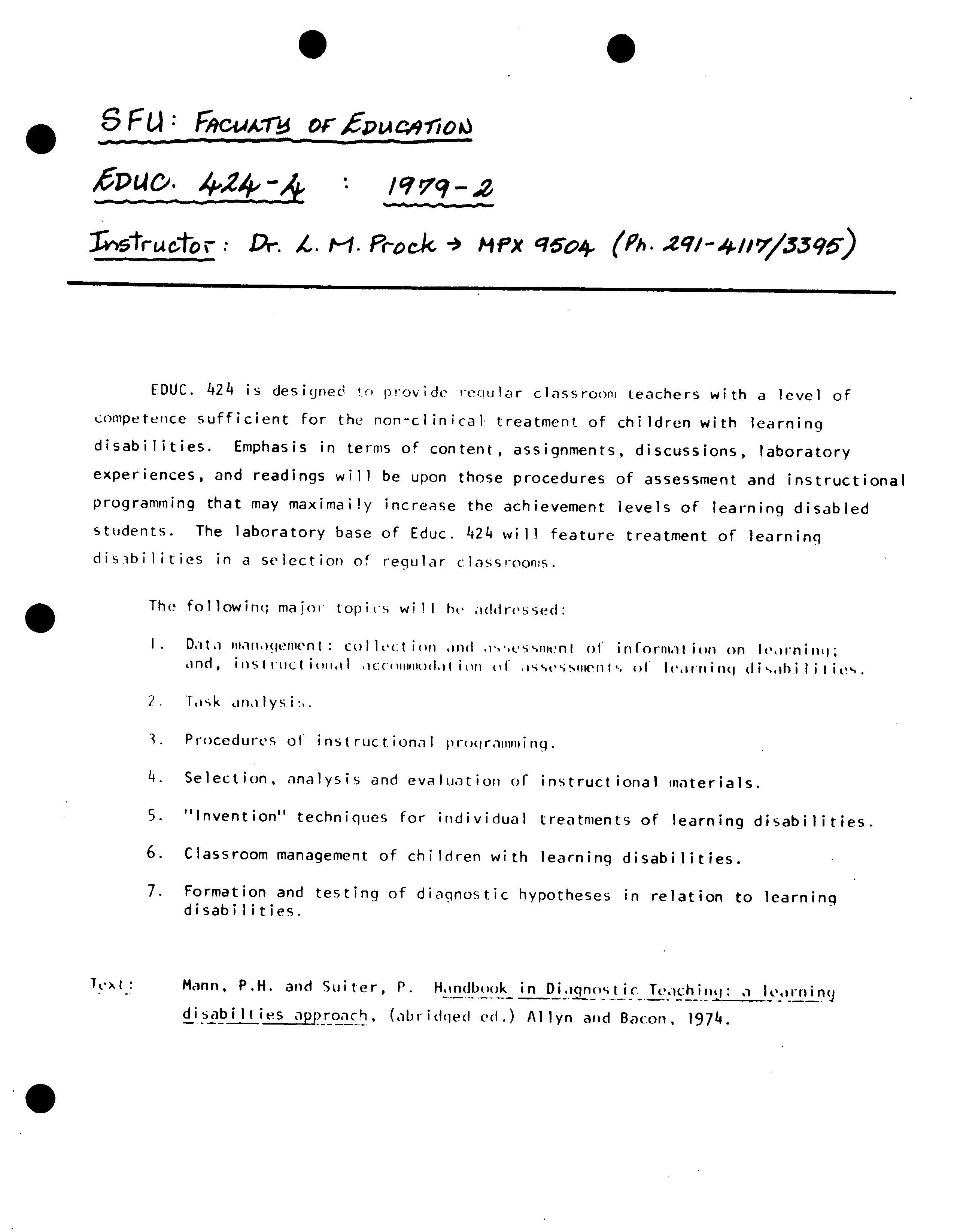I
?
.
6 F U:
?
0F
4P
1A C,41iO k
V
-
------- -
4Pi40.
424-4
- ?
?
'-i-
/q79_2
?
--.---
3'*tr
t.
ctor: Dr. b. H. Pr-i, c.k - ii #x 6-o4 (P,.
FOUC. 42 I
4
is designed
to
provide reiular classroom teachers with a level of
competence sufficient for the non-clinical treatment of children with learning
disabilities. ?
Emphasis in terms of content, assignments, discussions, laboratory
experiences, and readings will be upon those procedures of assessment and instructional
programming that may maximafly increase the achievement levels of learning disabled
students. The laboratory base of Educ.
1
+24
will feature treatment of )earning
disibilities in a selection of regular classrooms.
The fo how I nq ma Jo
-
top
rs wi 1 I he
addressed
I
?
.
Data II)andqemenl : collect
ion
a
nd
.lessiuenI of informat ion on leirnint
and, ?
iiisl i'iict lotidi
?
'lCCHIIIII)(I,1I
i1I1 ?
f ?
•Iss('SstIKI)t'-, 01
?
I('I1IIiI1(J
di'.ihi lii
rdk
Jfl1
I ys
3.
?
Procedures of instructional pruqranuni rig
Li. ?
Selection, analysis and evaluation of instructional materials.
5.
"Invention" techniques for individual treatments of learning disabilities.
6.
Classroom management of children with learning disabilities.
7.
Formation and testing of diagnostic hypotheses in relation to learning
disabilities.
Mann, P.H. and Suiter, P.
?
HIndbuoki
nDLIqnos( j
cTedchj,Iq: a Ierninj
disabilties_ approach , (abri(hied ed.) Ahlyn and Bacon, 1974.

